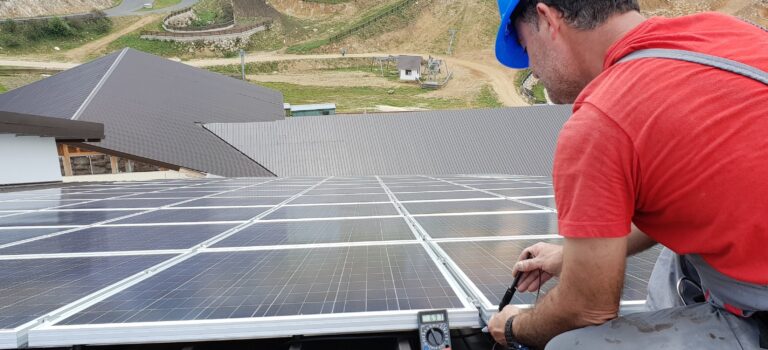The announcement of a new project by the Biden administration to drastically alter the American power infrastructure is a ground-breaking step towards a more sustainable future. This bold strategy, which was revealed on August 12, 2024, at a press conference in Washington, D.C., aims to lower the nation’s carbon footprint and strengthen its reliance on renewable energy sources.
approximately the next ten years, the “Clean Energy Revolution Act” plan aims to invest approximately $500 billion in renewable energy projects. The goal of this significant financial commitment is to hasten the switch from fossil fuels to renewable energy sources like geothermal, wind, and solar energy.The effort, according to President Joe Biden, is a critical step in the fight against climate change and seeks to establish US leadership in renewable energy technology worldwide.
President Biden declared, “Today, we take a bold step forward in our journey towards a greener future.” “This act aims to create jobs, advance technology, and leave future generations with a planet that is not only livable but thriving, not just reducing emissions.”
The Clean Energy Revolution Act is made up of various important parts. First of all, $200 billion will be used to develop and implement cutting-edge renewable energy technologies. This entails substantial expenditures on wind turbines, solar farm construction, and advanced energy storage technologies. By 2030, the target is to increase the share of renewable energy sources in the country’s energy mix to at least 50%, from the current level of about 20%.
Second, the act intends to update the American electrical grid, which is frequently criticised for being antiquated and prone to failures. The construction of smart grid technology intended to improve the efficiency and dependability of electricity distribution will be facilitated by the additional funds.

The program also strongly emphasises economic expansion and the development of jobs. Up to a million new jobs are predicted to be created by the Clean Energy Revolution Act in a variety of industries, including manufacturing, construction, and research. High pay and a boost to local economies are anticipated from these positions, especially in areas that have historically relied on the fossil fuel industry.
The act also suggests a number of tax breaks and subsidies for companies and individuals who invest in renewable energy technologies in order to support this shift even more. Significant tax advantages will be available for installing solar panels, buying electric vehicles, and upgrading homes to be more energy-efficient, all of which will promote the mass adoption of green technologies.
In addition to these measures, the Clean Energy Revolution Act also declares a commitment to environmental justice. Given that minority and low-income neighbourhoods are often disproportionately impacted by pollution and climate change, the plan includes provisions for targeted investments in these areas. The goals are to make sure that the benefits of the clean energy transition are distributed fairly and to help communities that are more susceptible adapt to the changing energy landscape.
The Clean Energy Revolution Act has been enthusiastically embraced by environmentalists, who see it as a major step in the right direction towards solving the climate catastrophe. Leading environmental scientist Dr. Lisa Greenfield stated, “This is exactly the kind of bold action we need.” In addition to lowering greenhouse gas emissions, investments in renewable energy and grid modernisation will open the door for a more durable and sustainable energy system.
Opponents of the plan, meanwhile, have voiced concerns about potential cost overruns and potential disruptions to the current energy markets. A further worry raised by critics is whether the act’s lofty goals can actually be met. Prominent opponent of the plan Senator Tom Harrison stated, “While the goals are commendable, we must carefully consider the economic impacts and ensure that the transition does not lead to unintended consequences.”
The Biden administration is nevertheless upbeat about the Clean Energy Revolution Act’s ability to bring about significant change in spite of these reservations. The administration pledges to collaborate with allies from all political persuasions in order to overcome obstacles and guarantee the initiative’s effective execution.
The world will be watching the United States’ progress as it sets out on this ambitious route towards a greener future. The Clean Energy Revolution Act’s accomplishments may provide other countries looking to tackle climate change and make the switch to sustainable energy systems with a model. The United States can take the lead in establishing a cleaner, more sustainable world via the combined efforts of industry, government, and people.





